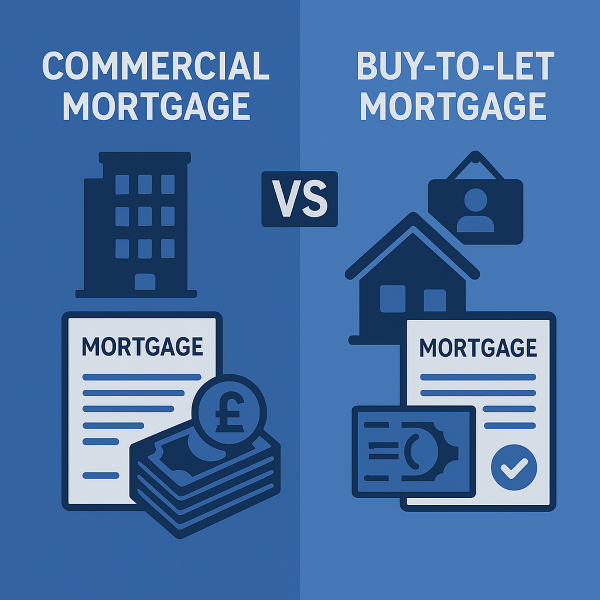Commercial vs Buy-to-Let Mortgages | If you are investing in property, you’ll face a key decision: whether to use a commercial mortgage or a buy-to-let mortgage. This choice is critical because each route brings different eligibility rules, interest rates, tax and regulatory implications. In simple terms, a commercial mortgage is designed for business-use properties, while a buy-to-let mortgage is for residential properties let to tenants. By understanding the differences and how lenders assess each type, you can choose the route that best suits your investment goals and risk appetite.
What is a Buy-to-Let Mortgage?
A buy-to-let mortgage is for residential properties that you rent out to tenants. Lenders focus on projected rental income rather than your personal earnings. Typical features include:
-
Requires a deposit of often 20-40% of the property value.
-
The rent-cover ratio assesses affordability.
-
Rates are slightly higher than standard residential mortgages.
-
Suitable for landlords of single lets or small portfolios.
What is a Commercial Mortgage?
A commercial mortgage is used to buy or refinance property used for business purposes, such as offices, retail units, and industrial premises. Key features:
-
Lenders assess the tenant/business and the lease rather than just the rent.
-
Deposits are often larger, and interest rates can be higher due to perceived risk.
-
Suitable for large portfolios, mixed-use or semi-commercial properties, or a business’s own premises.
Key Differences at a Glance
| Feature | Buy-to-Let | Commercial |
|---|---|---|
| Property use | Residential let to tenants | Business premises let to companies |
| Deposit / LTV | Typically 60-80% (LTV 40-60%) | Often 60-70% (LTV 30-40%) or lower |
| Rental cover/stress test | Rent > ~125-130% of payments | Lease/business income >> mortgage payments; can require 145%+ cover |
| Rates | Generally lower than commercial | Often, higher terms are more complex |
| Regulatory regime | Less regulation for standard BTL; changes affect tax relief | More complex underwriting; more business risk |
| Suitable investor | Landlords of houses/flats | Investors buying business-use premises or large portfolios |
When Should You Choose Commercial vs Buy-to-Let?
-
Choose buy-to-let when you plan to let a residential property, have a straightforward let structure, and seek long-term rental yield at lower risk.
-
Opt for commercial when you are investing in business-use premises, need flexibility for mixed-use, or are building a larger portfolio.
Real-world tip: If the property has both a shop and flats above, you may need a commercial or semi-commercial mortgage rather than a standard buy-to-let mortgage.
Consider your deposit, experience, risk appetite, and whether you have a business tenant or just a residential tenancy.
Risks and Considerations
-
Economic risks: Business tenant failure can affect commercial property; residential lets may suffer void periods.
-
Tax and regulation: Recent changes to buy-to-let tax relief affect residential strategy more. A commercial may offer certain tax advantages.
-
Exit strategy and valuation: Commercial properties may be harder to resell, or value may depend on the tenant covenant and lease length.
-
Cost and documentation: Commercial mortgages often require more complex documentation (business accounts, leases) and may incur higher fees.
How We Can Help
We offer expert advice on investment property finance. From our commercial finance options to our buy-to-let mortgage services, we help you structure your investment, select the right route, and access the best lenders. If you are ready to move forward or have questions, speak with our specialist investment property team today.
Thank you for reading our “Commercial vs Buy-to-Let Mortgages | Which Should You Choose ” publication. Stay “Connect“-ed for more updates soon!

